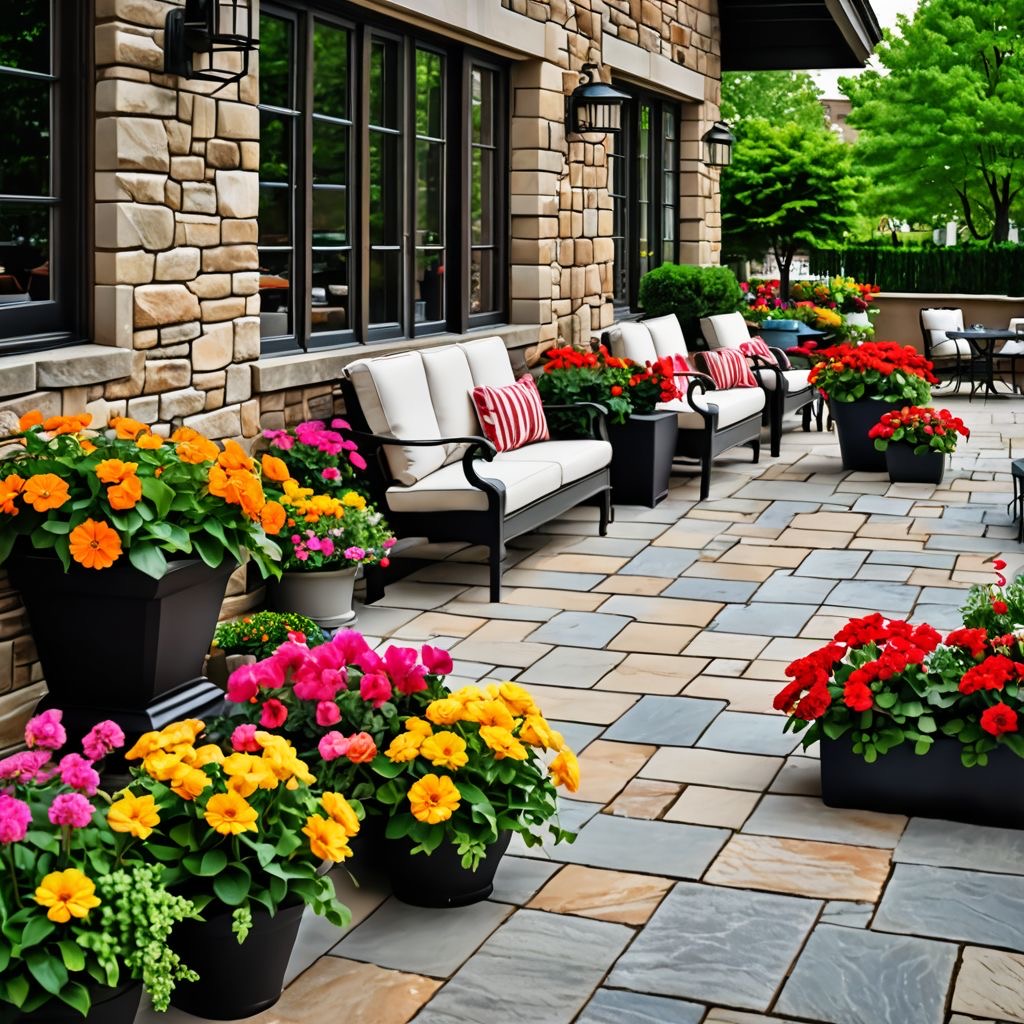
Table of Contents:
-
Introduction: Why You Should Care About Permits and Utilities Before Digging Up Your Yard to start your landscape project
-
Understanding the Basics: What Constitutes a Landscape Project in Winnipeg?
-
Do You Need a Permit for Your Landscape Winnipeg Project?
-
Navigating the City of Winnipeg’s Permit Requirements
-
When to Contact Manitoba Hydro and Other Utility Providers
-
Planning Your Backyard Landscape Design: From Patio Design to Water Features
-
The Role of Hardscape and Softscape in Your Project
-
DIY vs. Hiring one of the best Landscaping Contractors Winnipeg has to offer: Pros and Cons
-
Budgeting for Your Project: Affordable Landscaping Winnipeg vs. Premium Options
-
Common Mistakes to Avoid in Residential Landscaping Winnipeg
-
Conclusion: Turning Your Landscaping Ideas into Reality
Introduction: Why You Should Care About Permits and Utilities Before Digging Up Your Yard:

So, you’ve decided to transform your backyard landscape into a Pinterest-worthy oasis. Maybe you’re dreaming of a cozy patio design, a stunning water feature, or even a full blown outdoor kitchen where you can grill burgers while sipping a cold one. But before you grab that shovel and start digging, there’s something you need to know: this isn’t just about planting pretty flowers or laying down paving stone. It’s also about navigating the maze of permits, regulations, and utility considerations that come with any landscape design Winnipeg project.
Think of it this way: your backyard landscape design is like a cake. The best hardscaping services Winnipeg has to offer includes elements like: retaining walls, patios and interlocking brick, all considered Hardscape or the “non-living” elements of a landscape design, while the softscape (your flower beds, shrubs, and garden design Winnipeg) is the frosting. But if you don’t follow the recipe—or in this case, the rules—you might end up with an unwelcome surprise.
In this guide, we’ll walk you through what you need to know, from whether you need a permit to how to avoid accidentally cutting through a gas line (spoiler: it’s bad). We’ll also explore the pros and cons of DIY vs. hiring landscaping companies Winnipeg, and give you tips on how to create quality landscaping without breaking the bank.
By the end of this article, you’ll be armed with the knowledge you need to turn your landscaping ideas into reality—without any nasty surprises.
Understanding the Basics: What Constitutes a Landscape Project in Winnipeg:
Before we dive into permits and utilities, let’s define what we’re talking about. A landscape project can range from simple yard maintenance Winnipeg-style (“Winnipeg-style” meaning as appropriate for our Winnipeg climate and weather systems) like mowing the lawn or planting shrubs to more complex endeavors like building a deck, installing a pergola, or creating a pool and patio setup.
In Winnipeg, the City considers any project that involves altering the land, adding structures, or changing the use of your property as a development.
The key takeaway? If your project involves more than just planting trees and flowers or installing sod, you’ll likely need to check in with the City of Winnipeg and possibly Manitoba Hydro or other utility providers.
Contact us today for your free estimate.
Do You Need a Permit for Your Landscaping Winnipeg Project:
The short answer? It depends.
The City of Winnipeg definitely requires permits for certain types of these projects, especially those that involve elements like decks, retaining walls, or water features. For example, if you’re planning to build a deck that’s more than 24 inches high, you’ll need a permit. Similarly, if you’re installing a retaining wall that’s over 4 feet tall, you’ll need to get approval from the City.
On the other hand, smaller projects like planting shrubs, creating a flower bed design, or laying down mulch as examples,typically don’t require a permit. But if you’re unsure, it’s always best to check with the City’s Planning, Property, and Development department.
Navigating the City of Winnipeg’s Permit Requirements:

Navigating the City’s permit process can sometimes feel like trying to solve a Rubik’s Cube blindfolded, especially for a first-timer. But, here’s a quick rundown of what you need to know:
-
Development Permits: If your project involves changing the use of your land (like adding a patio design to your yard), you’ll need a development permit. This ensures your project complies with the Winnipeg Zoning By-laws.
-
Building Permits: For projects that involve creating structures (like a deck or gazebo), in some cases, you’ll need a building permit. This ensures your project meets Manitoba Building Codes.
-
Trade Permits: If your project involves electrical work (like installing landscape lighting-other than solar lighting), you’ll need a trade permit from Manitoba Hydro.
The good news? The City of Winnipeg has an online portal called Permits Online where you can apply for permits, track your application, and even make payments. And, more good news: the best landscaping companies Winnipeg has to offer include obtaining required permits and making contact with utility providers in their service offerings.
When to Contact Manitoba Hydro and Other Utility Providers:
Before you start digging, it’s crucial to contact Manitoba Hydro and other utility providers to locate any underground lines. This isn’t just a suggestion—it’s a requirement.
Hitting a gas line or electrical cable can lead to serious injuries, costly repairs, and even legal consequences. Manitoba Hydro offers a free service called “Call Before You Dig” to help you avoid these disasters.
Planning Your Backyard Landscape Design: Everything From Patio Design to Water Features:

Now that we’ve covered the boring (but essential) stuff, let’s talk about the fun part: designing your dream backyard project.
Contact us today for your free estimate.
Whether you’re dreaming of a cozy patio design, a stunning water feature, or a functional outdoor kitchen, the key is to plan ahead. Start by sketching out your ideas and considering how each element will fit together.
For example, if you’re adding a deck, think about how it will connect to your patio or gazebo. If you’re installing a water feature, consider how it will complement and fit with your flower bed design, trees and shrubs.
The Role of Hardscape and Softscape in Your Project:

When it comes to landscaping, as you already know, there are two main components: hardscape and softscape.
Hardscape refers to the non-living elements of your design, like retaining walls, interlocking brick, and decks. These elements provide structure and functionality to your space.
Softscape, on the other hand, refers to the living elements, like shrubs, flower bed design, and garden design. These elements add color, texture, and life to your backyard landscaping.
The key to a successful project is balancing these two components. Too much hardscape can make your yard feel cold and uninviting, while too much softscape can make it feel cluttered and unmanageable.

DIY vs. Hiring Landscaping Contractors Winnipeg: Pros and Cons:

Hiring one of the best landscaping contractors Winnipeg has come to rely on is a big decision. Maybe, one of the biggest decisions you will face. Should you tackle your project yourself or call in the pros? Consider the following:
Contact us today for your free estimate.
Tips on how to prepare for a consultation meeting with a landscape contractor
DIY Pros:
-
Save money on labor costs.
-
Complete control over the design and execution.
DIY Cons:
-
Time-consuming and physically demanding.
-
Risk of making costly mistakes.
Hiring Pros:
-
Access to professional expertise and equipment.
-
Experienced- there's not much they haven't already seen and experienced
-
Faster completion time.
Hiring Cons:
-
Higher costs.
Budgeting for Your Project: Affordable Landscaping Winnipeg-DIY style vs. More Expensive Options:

Of course, your budget will play a big role in determining the scope of your project. While affordable landscaping options like DIY flower bed design or simple tree planting with river stone beds, as examples, can save you money and are relatively easy for the beginner, some of the pricier options like utilizing a contractor for installing or building hardscaping elements can add pzazz to your yard and significant value to your home.
Ready to chat about your garden and landscaping goals?

Reach out by call or text to: 204-229-9789 or click here to submit your information today to arrange a “no obligation” introductory phone call. We look forward to helping you transform your yard.
Tips on how to prepare for a consultation meeting with a landscape contractor
Common Mistakes to Avoid in Residential Landscaping Winnipeg:
Even the most well-planned projects can go off the rails if you’re not careful, and cause your project to become more stressful than anticipated. Here are some common mistakes to avoid:
-
Skipping Permits: Failing to get the necessary permits can result in fines or even having to tear down your project.
-
Ignoring Utilities: Always call Manitoba Hydro before digging to avoid hitting underground lines.
-
Overlooking Drainage: Poor drainage can lead to water damage and erosion.
Conclusion: Turning Your Landscaping Ideas into Reality:
Transforming your backyard into a functional and beautiful space is no small feat, but with the right planning and preparation, it’s entirely achievable and undoubtedly worthwhile. No matter what you are envisioning, the key is to start with a solid plan and then follow the rules.
By understanding the permit requirements, contacting utility providers, and balancing hardscape and softscape elements, you can create a space that’s both beautiful and functional. And whether you choose to DIY or hire a contractor, the most important thing is to enjoy the process and take pride in the results.
So grab that shovel, roll up your sleeves, and get ready to turn your ideas into reality. Your dream landscape design is just a few steps away.
**Cautionary Note** on Landscaping in Winnipeg:
As you embark on your landscaping journey in Winnipeg, it's crucial to recognize the importance of understanding local regulations and permits before you dig in. The city of Winnipeg has specific guidelines and requirements that govern landscaping projects, and navigating these rules can be a daunting task for even the most enthusiastic DIY homeowner. This cautionary advice aims to provide insight into what projects may require a permit, the potential frustration of the permitting process, and why hiring a professional landscape contractor may ultimately be your best option.
Examples of Projects That Require Permits:
In Winnipeg, various landscaping projects necessitate specific permits from the city to ensure safety, environmental compliance, and aesthetic harmony. Common projects requiring permits include:
1. Major Grading or Site Alterations: If your landscaping plans involve changing the land's topography, such as extensive grading or earth moving, you will likely need a permit.
2. Retaining Walls: Building walls that exceed a particular height (generally over 1 meter) falls under regulations, as improper construction could lead to soil erosion or drainage issues.
3. Decks and Patios: Constructing a deck or patio that is freestanding or attached to a structure may require a permit, especially if it alters any designated utility easements. Decks that are designed to be more than 24 inches above the ground require a permit.
4. Fencing: While smaller fences and “Permitted Fences" may often be constructed without a permit, taller structures or those placed along property lines might need approval.
5. Water Features: Ponds, swimming pools, or significantly sized water features typically require permits to ensure they meet municipal safety standards.
6. Planting Trees: In some cases, planting trees within specific distances from utility lines or property lines requires a permit, particularly for larger species.
7. In Winnipeg, whether you need a permit for constructing a gazebo or pergola typically depends on a few factors, including the size, height, and style of the structure, as well as its intended use.
Gazebos
- Permits Required:
Generally, a gazebo that exceeds a certain height (often around 1 meter or 3.28 feet) or has a foundation may require a building permit. If it is considered a permanent structure and is within proximity to property lines or utility easements, you will likely need to seek approval from the City.
- Permits Probably Not Required: Smaller, portable gazebos or those that are less than a specific height (check local regulations for exact specifications) may not require a permit.
Pergolas
- Permits Required: Similar to gazebos, larger pergolas, especially those that are attached to a house or exceed height limits, may necessitate a permit. If they involve electrical work for lighting or fans, permits will also likely be required.
- Permits Probably Not Required: Smaller, freestanding pergolas often do not require permits, as long as they comply with local zoning regulations.
Contact us today for your free estimate.
Projects That May Not Require Permits
On the flip side, many landscaping projects can be undertaken without the need for city permits. These include:
- Planting annual or perennial gardens
- Installing small-scale decorative features like bird baths or planters
- Adding mulch or gravel to garden beds
- Minor repairs or modifications to existing landscapes (dependent on local regulations)
Changes in Regulations:
It is essential to bear in mind that regulations and codes can and do, change over time. What may have been permissible last year could be subject to new rules today. For this reason, the best practice is to always check with the City of Winnipeg’s Planning, Property and Development Department before commencing any landscaping project, regardless of its scale. Up-to-date information can save you from potential fines or the need to redo work that doesn’t meet current standards.
Consider Hiring a Professional:
While the allure of a DIY project can be strong, it's important to acknowledge the intricacies involved in complying with city regulations. The permitting process can be time-consuming and frustrating, often leading to delays in your landscaping plans. Understanding the nuances of local laws, submitting the necessary documentation, and ensuring compliance can swallow up valuable time and resources.
By hiring a professional landscape contractor with expertise in Winnipeg's regulations, you not only expedite the process but also gain invaluable knowledge and experience that can enhance the quality of your project. Professionals often have established relationships with city officials and are familiar with the permitting process, thus minimizing potential hiccups along the way.
In conclusion, while landscaping can be an exciting and fulfilling endeavor, it requires careful consideration of local regulations and permits.
Always consult the city before starting any project, and consider the long-term benefits of hiring a knowledgeable professional familiar with local regulations to navigate these complexities for you.

